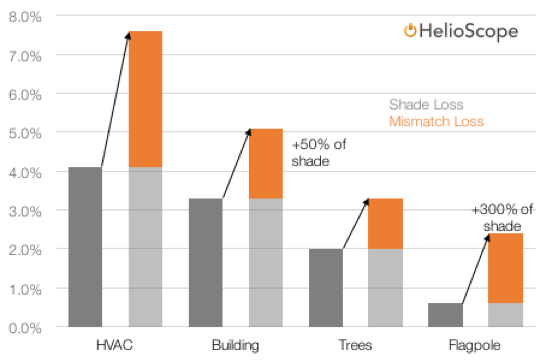This installation tip was provided by Paul Grana, founder of Folsom Labs
Shade leads to mismatch. Simple, right? Not so fast. This relationship is one of the most commonly discussed in solar design—and was a big factor in propelling microinverters and optimizers to their early market adoption. But precisely how much mismatch should one expect from shading on an array?
On one hand, some will say that shade on a single module can “take down an entire string,” implying a multiplier effect of 10- to 15-times. In reality, that would depend on the system wiring, and often the string would have the option to bypass that shaded module and run the remaining modules at a higher voltage (still mismatch loss, but not 15-times the shade). On the other end of the spectrum, if all modules are shaded at the same time, then there would technically be no mismatch, since each of the modules in the array would be perfectly balanced. The right answer to how much mismatch will result is it depends.
For example, start with a commercial system with a variety of sources of shade: HVAC units on the roof, nearby trees and a large, tall building in the next lot.
Running an initial simulation, one finds that the system gets 6.1% shade loss, with a corresponding mismatch loss of 4.6%. In other words, the mismatch losses are roughly similar to the shade losses.
Isolating each of the different objects will show how that relationship between shade and mismatch can change. For example, the HVAC units produce 4.1% shade loss and 3.5% mismatch loss—fairly similar levels. The nearby building creates 3.3% shade loss, but 1.8% mismatch loss—just half as much mismatch as shade. A flagpole (with a long, skinny shadow) would create just 0.6% shade loss, but 1.8% mismatch loss—a 300% difference between shade and mismatch.
To understand how shade leads to mismatch, one needs to understand the type of shade that hits the array: Are the shadows narrow and only hit a few modules, or are they wide and sweeping across many modules at once? Ultimately, it’s a good reminder to use real simulation programs rather than simple rules-of-thumb.








Tell Us What You Think!